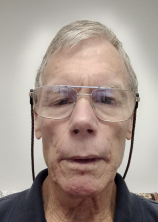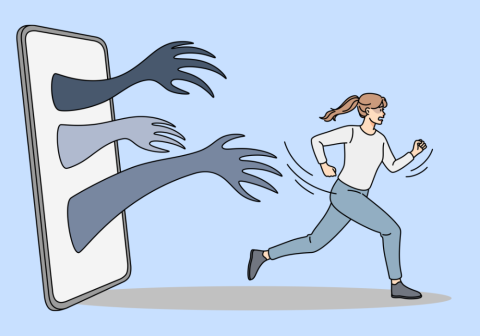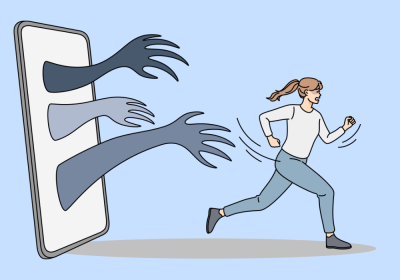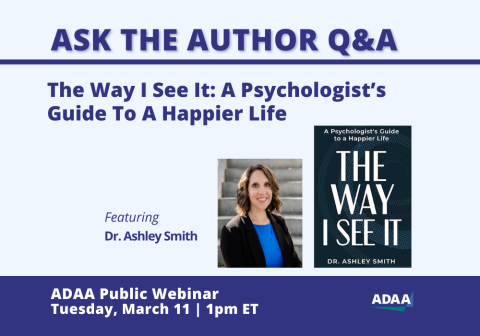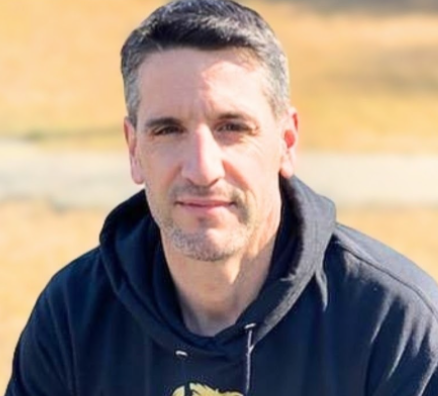Your “Strong” Friends Need Checking in on Too: Despair and High Functioning Depression
Trigger Warning: Content discusses/mentions suicide and death*
 The Merriam-Webster dictionary defines despair as the feeling of no longer having any hope or losing all hope or confidence. Well, spoiler alert…if you are surviving the constant stress of the pandemic, then you too have probably felt moments of despair. The mental, emotional and physical toll of work uncertainties, health mandates, the daunting feeling of a never-ending global health crisis, and the ongoing economic impact throughout the past two years all take their toll on one’s mental health.
The Merriam-Webster dictionary defines despair as the feeling of no longer having any hope or losing all hope or confidence. Well, spoiler alert…if you are surviving the constant stress of the pandemic, then you too have probably felt moments of despair. The mental, emotional and physical toll of work uncertainties, health mandates, the daunting feeling of a never-ending global health crisis, and the ongoing economic impact throughout the past two years all take their toll on one’s mental health.
Unfortunately, members of the BIPOC community are no stranger to feelings of despair. In more recent years, those same feelings having resulted in an increase in suicides. More specifically, since the beginning of 2022, the Black community have seen young adults fall victim to despair and suicide like Ian Alexander Jr., 26-year-old son of Emmy and Golden Globe actress Regina King and Chelsie Kryst, 30-year-old lawyer and Miss USA 2019.
Around the same time, close to 20 bomb threats were made at multiple HBCUs specifically during Black History Month. For me, as a 25-year-old Black woman, hearing about those situations back-to-back strongly affected me. I also felt despair as I questioned when these tragedies would end.
At the same time, I started making the connection between feelings of despair, high-functioning depression and the increase in suicide rates. I quickly realized and ultimately accepted the fact that I too dealt with thoughts of despair and depression. I never realized I was dealing with depression because I felt conditioned by societal norms to carry the weight of the world with grace and a smile. I was taught by a deeply rooted stereotype in the community that Black women were supposed to be strong 24/7. Regardless of when I felt hopeless, there was just no room or time to be depressed or show sadness.
I didn’t consider myself depressed because I had mentally conditioned myself to bury myself in constant work. However, working constantly was only a distraction from the internal feelings of sadness, hopelessness and ultimately despair. I realized that every time I decided to slow down or attempted to rest from exhaustion, that I immediately felt like a failure or that I wasn’t doing enough, and those feelings of despair would start to take over.
I noticed it was easier to run away from despair when I constantly kept myself busy doing things for everyone else around me- and ignoring my own well-being. I was functioning normally to the outside world, but, as I now recognize, I was dealing with high-functioning depression. I initially didn’t classify myself as depressed because I didn’t feel like I displayed the typical signs of low energy levels or a lack of interest in daily activities. I felt the opposite. I often felt more productive in everyday situations. The main difference between symptoms of major depression and high-functioning depression is that I continued to function at a high level while simultaneously experiencing signs of sadness and despair internally, which is the true definition of high functioning depression.
When I found out that Chelsie Kryst had also been living with high functioning depression, it made me realize that one of the scariest parts of being good at disguising your feelings is that others tend to perceive that as a sign of strength. And there’s no easy solution because there can be a constant cycle of good and bad days.
I was one of those “strong” friends - on the outside. And I realize now how important it is to check in on your strong friends. Check in on the people in your life that seem like they are handing the uncertainties of life with grace and poise. Check in on your loved ones that always seem to check in on you first. In this ever-changing world of pandemic uncertainties, try to listen for the signs of hopelessness and despair in the ones that seem good or strong. You never know whether their strength is coming from having to constantly mask their true feelings. And remember, the strong friends experience sadness too. So, reach out to those family and friends and let them know you hear them, see them and care about them. It’s ok to not be ok sometimes but everyone deserves grace, a support system and a safe space you feel comfortable sharing your story and expressing uncomfortable feelings.
About Tiara
Tiara Johnson is a part-time short-term consultant (January through March 2022) working with ADAA on enhancing DEI communication and engagement for the public community. Tiara is public relations and corporate communications specialist that blends her passion of mental health advocacy to help create effective messaging among various audiences. Tiara also has experience creating and implementing strategic communications plans across multiple industries.
Prior to joining ADAA, Ms. Johnson wrote a book Living with 2020 Vision, highlighting mental health stigmas within BIPOC communities. Tiara Johnson is the founder of Embrace MH LLC, a mental health awareness and lifestyle brand dedicated to amplifying conversation surrounding mental wellness. She also hosts the EmbraceMH Podcast.
Tiara holds a Master of Professional Studies (MPS) in public relations and corporate communications from Georgetown University and a Bachelor of Arts degree in Journalism with a minor in Marketing from Georgia State University.
Share Your Story and Voice and Help #breakthestigma Around Mental Health
Support ADAA's Mission - Every Gift Makes an Impact



